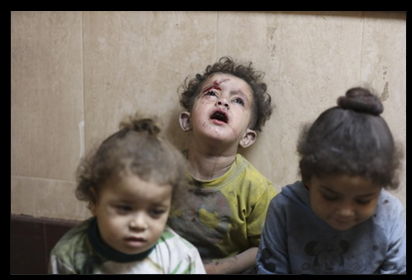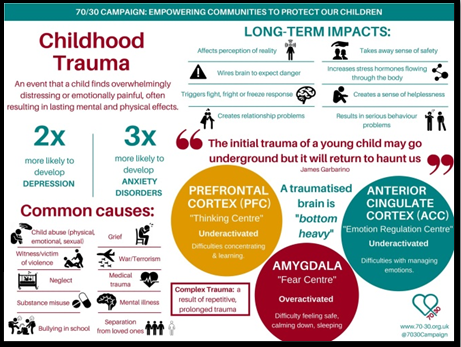THE IMPACT OF VIOLENCE ON A CHILD’S MIND
Relevance:
GS 3 and 4
- Ethical issues in international relations.
- Role of external state and non-state actors in creating challenges to internal security.
Why in News:
- The conflict in Gaza has caused a humanitarian crisis, with thousands of people killed and displaced. This violence has also had a major impact on children.
The Hindu
Maria Montessori and Elias Canetti’s Insights on Early Impressions and Violence
- Seeds of Conflict: Maria noted that exposure to violence in childhood initiates a detrimental cycle of revenge, considering it a fundamental cause underlying conflicts and wars globally.
- Parallel Views: Canetti’s work in “Crowds and Power” echoed Montessori’s stance, highlighting how violence sows seeds of vengeful thoughts in young minds.
- Evolution into Resistance: Canetti emphasized the progression of these thoughts, transforming into resistance against societal norms and, in some cases, evolving into rebellion during adulthood.
Factors Contributing to Vulnerability
- Socioeconomic Disparities: Poverty and economic hardships create environments where children lack access to essential resources, increasing their susceptibility to exploitation and violence.
- Historical Contexts: Deep-seated conflicts, historical grievances, and ongoing tensions within societies contribute to an atmosphere where children are exposed to violent ideologies and behaviors.
- Technological Influences: Modern technological advancements, when misused or manipulated, can expose children to radicalization, propaganda, and desensitization to violence, impacting their perceptions and behaviors.
- Educational Gaps: Inadequate educational opportunities or lack of quality schooling often leave children without proper guidance and support, making them more vulnerable to manipulation and radicalization.
- Social Exclusion and Discrimination: Marginalized communities and individuals facing discrimination are often at a higher risk of vulnerability, as they may face limited opportunities, exclusion from social networks, and systemic biases that increase susceptibility to violence.
Psychological Impact on Palestinian Children
- Traumatic Experiences: Palestinian children in conflict zones like Gaza endure severe psychological trauma due to exposure to violence, bombings, and displacement.
- Emotional Distress: Witnessing destruction, experiencing injuries, and facing the loss of loved ones can lead to profound emotional distress and mental health challenges among these children.
- Long-term Psychological Scars: The trauma of conflict can leave lasting scars, impacting their emotional well-being, behavior, and ability to cope with stress, potentially persisting into adulthood.
- Disrupted Childhood: Continuous exposure to violence disrupts their normal childhood experiences, leading to anxiety, fear, nightmares, and difficulties in socializing or learning.
- Risk of Prolonged Impact: Without adequate mental health support and interventions, these children face a heightened risk of developing long-term psychological issues, affecting their future development and well-being.
Role of Education in Mitigating Violence
- Values Cultivation: Education plays a crucial role in instilling core values like empathy, tolerance, conflict resolution, and respect for diversity, fostering a peaceful societal ethos.
- Critical Thinking Skills: Educational systems that emphasize critical thinking and problem-solving empower individuals to analyze situations rationally, reducing impulsive and violent reactions.
- Promoting Dialogue and Understanding: Education creates platforms for dialogue, encouraging open discussions about societal issues, thereby fostering mutual understanding and cooperation.
- Conflict Resolution Techniques: Educating individuals on effective conflict resolution methods equips them with tools to address disputes peacefully, reducing the escalation of conflicts.
- Building Inclusivity and Equality: Education that promotes inclusivity and equality helps diminish discriminatory attitudes, fostering a more harmonious and less violent society by embracing diversity.
Envisioning Education’s Future in Conflict Zones
- Holistic Curriculum Integration: Education in conflict zones should include comprehensive curricula that promote peace, reconciliation, and mutual understanding. Integration of diverse perspectives and histories can foster empathy and bridge divides.
- Empowerment Through Inclusive Education: Emphasizing inclusive education practices, providing equal opportunities for all children regardless of backgrounds or ethnicities, is crucial in nurturing an environment of equality and respect.
- Teacher Training and Support: Training educators to handle conflict-sensitive topics and equipping them with skills to manage trauma-related issues among students becomes imperative. Support mechanisms for teachers in these zones are essential for their well-being and effectiveness.
- Promotion of Critical Thinking and Dialogue: Encouraging critical thinking and open dialogue within classrooms cultivates an environment where diverse opinions are respected and constructive discussions on complex issues, including historical conflicts, can occur.
- Partnerships for Educational Development: Collaborative efforts between governments, NGOs, and international organizations are essential to invest in infrastructure, resources, and sustainable educational programs. Such partnerships can ensure long-term development and stability in conflict-affected regions.
Upholding Vision for Peace
- Educational Empowerment: Education stands as a powerful tool to nurture empathy, understanding, and tolerance among communities, laying the foundation for peaceful coexistence.
- Cultivating Global Citizenship: Instilling values of respect, empathy, and global interconnectedness in education helps shape future generations into responsible global citizens committed to peace.
- Conflict Resolution Skills: Education equips individuals with conflict resolution strategies, fostering dialogue, negotiation, and mediation as alternatives to violence in resolving disputes.
- Social and Emotional Learning: Integrating social and emotional learning into education helps develop skills like empathy, compassion, and resilience, crucial for fostering peaceful relationships.
- Collective Responsibility: Upholding a vision for peace requires collective responsibility and action from governments, communities, educators, and individuals to promote tolerance, understanding, and harmony in society.
In conclusion, education is not merely a means of acquiring knowledge and skills; it is a powerful instrument for shaping minds, fostering peace, and building a better future for all. By investing in education, we can empower children to become agents of positive change, breaking the cycle of violence and creating a world where peace prevails.
| Children and Armed Conflict: India
· India was previously listed in the “UN Children and Armed Conflict Report” alongside Burkina Faso, Cameroon, the Lake Chad basin, Nigeria, Pakistan, and the Philippines due to reported use of boys in Jammu and Kashmir by armed groups. Security forces were alleged to have detained, killed, and harmed these boys. · However, the most recent report in 2023 states that India has been removed from the list. This removal is attributed to government measures aimed at enhancing the protection of children. · In the 2022 report, concerns were raised regarding the harassment, questioning, and illegal detention of teenagers in violation of the Juvenile Justice (Care and Protection of Children) Act, 2015. Efforts have been initiated to safeguard children in conflict zones: · Establishment of legal and administrative frameworks to enhance child protection services in conflict-prone regions like Chhattisgarh, Assam, Jharkhand, Odisha, and Jammu and Kashmir. · Progress in forming a commission in Jammu and Kashmir dedicated to safeguarding children’s rights. · Commitment to fortify child protection by discontinuing the use of pellet guns on children and providing specialized training to security forces. · Emphasis on detaining children only as a last resort, ensuring minimal detention duration, and preventing any form of mistreatment in line with the Juvenile Justice Act. · Development of essential infrastructure such as Child Welfare Committees, Juvenile Justice Boards, and Child Care Homes as mandated by the JJ Act, 2015. · Active enforcement of the Protection of Children from Sexual Offences (POCSO) Act. |
Source:
The Hindu
Mains Question:
“In the face of the devastating consequences of war on children, how can education serve as a beacon of hope and a catalyst for peace building?

 The Hindu
The Hindu


